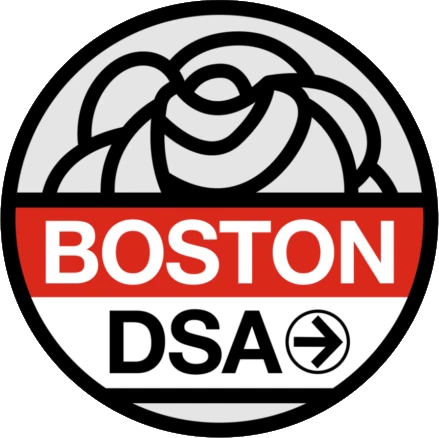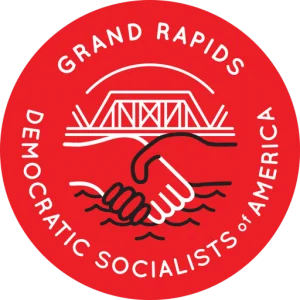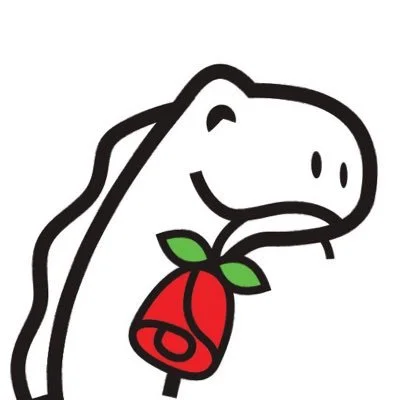
DSA Feed
This is a feed aggregator that collects news and updates from DSA chapters, national working groups and committees, and our publications all in one convenient place. Updated every day at 8AM, 12PM, 4PM, and 8AM UTC.


Boston Common Shakes With a Rally Organized in Hours After US Attack on Venezuela

[[{“value”:”

By: Liam Noble
BOSTON COMMON, MA – 2026 is off to an ignominious start. In the morning of January 3rd, Boston woke up to bizarre and disturbing news: the U.S. government had abducted the Venezuelan leader Nicolás Maduro in the night. Caracas had been bombed. In a symbolic act of vandalistic terrorism, the mausoleum and final resting place of Hugo Chavez had been blown up. The US military Southern Command had violated the most basic principles of state sovereignty – with no attempt at hiding imperial motive, unlike the Bush Administration in Iraq.
Less than twelve hours later, outraged protests erupted in every major city across the United States.

In Boston, at least 250 people turned out to hear speakers from the antiwar ANSWER Coalition and Boston Democratic Socialists of America (DSA), alongside Massachusetts Peace Action and the Party for Socialism and Liberation (PSL). Considering the very short notice on a freezing Saturday afternoon, the turnout was spectacular.
Rage simmered in the cold air.
The speakers hit continuous beats: opposition to imperial madness, opposition to murder and war, opposition to the venomous and ignorant lust for domination in our rulers that Americans are all too familiar with.
Again and again the question was tip-toed around: How do we stop the war machine? Answer: Organize, organize, organize!
Brian Garvey, representing Massachusetts Peace Action, said:
Go to your friends and family. Go to your neighbors. Talk about what is happening. We are creeping towards fascism, and have been for a long time. And join an organization!

Both Boston DSA co-chairs Bonnie Jin and Estefania Galvis spoke in the rally around the Park Street Station, and to reporters after.
Jin reported to WCVB:
The kidnapping of President Maduro from Venezuela is an illegal act. Whatever you think about the politics of Venezuela, the United States taking illegal intervention is an illegal act and will only make this worse.
The national DSA organization similarly organized a rapid response. A mass call was scheduled by noon and a statement released before rallies rocked the cities, and a statement analyzing the situation and issuing demands was released in hours:
This is a nakedly imperialist war to install a US puppet government that will give Venezuela’s oil resources over to US corporations and to force US hegemony over Latin America — the new “Trump Corollary” to the Monroe Doctrine.

Other speakers emphasized the sovereign choice of the people of Venezuela as paramount and referenced the wealth extraction that Trump and his billionaires are poised to now preside over. Hersch Rothmel of the ANSWER Coalition (Act Now to Stop War and End Racism) called the attack “an outrageous violation of international law.” He went on: “The only people who benefit are the oil billionaires.”
Trump himself, by the end of the morning, was boasting about the Venezuelan oil he planned to sell off and threatened the same upon nations not subservient to the U.S. empire. He wrongly claimed Mexico was run by cartels, aiming a threat at another Latin American socialist leader. The bloody, ridiculous imperial game will be repeated again and again.
This also marks the outbreak of a monumental crisis for the world— there is no international law any longer. This attack was carried out in the middle of negotiations, just to lull Caracas into a false sense of security. Colombia, with the People’s Republic of China and Russia both assenting, has requested a Security Council meeting at the United Nations — scheduled now for the next business day, on Monday.
Today Maduro, tomorrow, who knows?
If Trump’s War Department can abduct a sovereign head of state, just as his ICE agents abduct our neighbors, what about any of us?
Liam Noble is a photographer and contributing writer to Working Mass.

The post Boston Common Shakes With a Rally Organized in Hours After US Attack on Venezuela appeared first on Working Mass.
“}]]



Elon Musk and SpaceX attack the National Labor Relations Board
Elon Musk’s Space Exploration Technologies Corporation, commonly known as “SpaceX,” is challenging the constitutionality of the National Labor Relations Board (NLRB) in a lawsuit that could undermine the enforcement of national labor law. To date, the strategy is working, with its prospects unclear until the Supreme Court’s conservative supermajority weighs in definitively. The litigation is […]
The post Elon Musk and SpaceX attack the National Labor Relations Board appeared first on EWOC.


No More Blood for Oil: UE Condemns Military Attacks on Venezuela

[[{“value”:”

Statement of the UE Officers – December 18, 2025
PITTSBURGH, PA – Our government’s escalating attacks on Venezuela are unconstitutional, immoral, and a massive waste of resources. The idea that Venezuela represents a military threat to the U.S. is patently absurd; the use of the U.S. military to carry out lethal attacks on fishing boats and seize oil tankers amounts to simple murder and piracy. We demand that our government immediately cease these attacks, and that Congress exercise its power to reign in this overreach by the executive branch.
In the resolution “For Jobs, Peace and a Pro-Worker Foreign Policy,” delegates to our most recent convention declared that “Foreign and military policies should defend the interests of working people, not the wealthy. UE has long believed that the labor movement should promote its own foreign policy based on diplomacy and labor solidarity.” This commitment to diplomatic rather than military solutions led delegates to demand that the U.S. government “[c]ease using U.S. military and intelligence agencies in interventions against nations which pose no threat to the American people” and, specifically, that the U.S. “[c]ease all harassment of and economic sanctions on Venezuela.”
The administration has been attempting to justify its attacks with claims that the vessels it is attacking are smuggling drugs into the U.S., and that this is being funded by the Venezuelan government — claims for which it has not produced a shred of evidence. Even if these claims are true, the appropriate action would be to interdict the vessels, seize the drugs, and pursue criminal charges against the smugglers, not to carry out extrajudicial killings. Even if our country were in a legitimate armed conflict with Venezuela, the intentional killing of survivors, such as happened during a second strike on September 2, would still constitute a war crime.
We agree with Congressman Joaquin Castro (D-TX) that the blockade of Venezuela ordered by President Trump this week is “unquestionably an act of war. A war that the Congress never authorized and the American people do not want.”
As recent comments by White House Chief of Staff Susie Wiles make clear, these attacks are not about drugs, but are instead an attempt to bring about regime change and gain control over Venezuela’s oil. Although President Trump campaigned, in part, on keeping the U.S. from getting entangled in the internal politics of other countries, the course his administration is pursuing risks getting our military bogged down in a military conflict that few Americans want.
The administration’s actions are putting our service members in harm’s way and making demands on them to carry out illegal orders. Several senior military leaders have resigned in protest, and Senator Mark Kelly (D-AZ), who served as a Navy fighter pilot, has spoken out, reminding service members that they have the right to refuse illegal orders. In a disturbing use of the military to pursue a partisan political agenda, the Pentagon has opened and escalated an investigation of Senator Kelly.
Unfortunately, the use of extrajudicial killings as a tool of U.S. foreign policy is a bipartisan affair. During his eight years in office, President Obama ordered over 500 drone strikes, killing almost 4,000 people, including over 300 civilians, and normalizing the use of military power to engage in targeted killings in foreign countries. Congress must reassert its authority over the power to make war, not as a partisan measure, but because no president of either party can be trusted with this power.
As working people in the U.S. face an increasing affordability crisis, our government’s resources should be directed to meeting the needs of working people, not wasted on illegitimate and immoral military adventures. We demand that Congress pass H.Con.Res.64, a bipartisan bill which would invoke the War Powers Resolution to put a stop to this unconstitutional military aggression. War with Venezuela would be a disaster for the working people of both countries, and we as a labor movement must do our part to prevent it.
Scott Slawson
President
Andrew Dinkelaker
Secretary-Treasurer
Kimberly Lawson
Director of Organization
The post No More Blood for Oil: UE Condemns Military Attacks on Venezuela appeared first on Working Mass.
“}]]


Critique of Transgender Marxism, Essay 5
The author of this piece chose to remain anonymous.
This is a review and commentary on “A Queer Marxist Trans Feminism: Queer and Trans Social Reproduction” by Nat Raha, from Transgender Marxism. This review is from an agender perspective.
In the essay, Raha says that domestic social reproduction is a “feminine act.” In other words, they reify gender based on the particular gendered expression that occurs in the context of various societies where gendered signification is fungible, and ultimately arbitrary, based on which generation you’re in. In other words, the essay romanticizes a domesticated, sexist view of femininity, where feminine people do domestic work. I always disliked the word feminine, as it implies a traditional, binary sex, and never tries to overcome this binary to go beyond a representational view of gender.
Gender is fungible in every generation you’re in. Queerness itself is outside of time, responsible for all change – temporality, time itself, and the variable context of each generation is what constitutes the gendered expression of each era. Gendered expression does, as the book says, have its own emotional labor that one must go through for queer people. For queer people such as myself and my partner, not being recognized as queer is a sort of invisibility that can occur. Essays like this erase the experience of being agender. An agender view of these gendered phenomena is that like capitalism and its axiom of profit, gender is not extended anywhere in space. Heteronormativity is in contrast to queer gender, which takes traditional gender and performs it as straight people perform it, or it bends the expression.
But for me, gender expression is fungible. Archers in the past wore high heels; indigenous peoples and royalty such as pharaohs wore leggings and makeup. The makeup industry made makeup a feminine thing, as with other things that are bought and sold back to us through gendered expression of capital; we try to differentiate ourselves as the particular tries to differentiate itself but end up only creating a new universal. This is what occurs in Hegel’s Phenomenology of Spirit in the “Sense Certainty” and “Perception” sections. When you point to a thing, you get a universal of language. Language can only speak about things on a general level; it cannot capture the infinite difference of sense, and our ideas about gender are in fact immobile.
Because the only things which relate to the immobile motor in Deleuze and Guattari’s Anti Oedipus are Oedipus, capital, and heteronormativity, it makes me wonder: is gender itself a sort of machinic normativity, reproduced by representational sameness? Whenever we try to say gender is a fixed idea, we are not recognizing that our concepts of gender flow as through a stream, or as through the flows of the mega-machine; whatever its dominant beauty standards deem is gender is bought or sold to us. Ultimately, this strain of Marxist feminism does not want to produce rhizomatic views of gender that are not based on binary dichotomies. They focus on an idea of a binary domesticated sexism, but nonetheless think femininity relates to a very narrow time in history’s view of domesticity and femininity. It’s a performative contradiction.
The essay suggests that there should be compensation for all the extra work that queer people do that is not caught up in the creation of surplus value for capitalists, like emotional labor and nurturing actions. Wouldn’t it be beneficial to call nurturing and mutual aid a human action, instead of further stigmatizing and entrenching rigid gender boundaries that make one think they need to repress their emotions to perform as a man or diminish their needs for the sake of others to perform as a woman? That’s an ass backwards view of gender, and gender itself is an identity which is formed under capitalism. It would be better to reject it for a view that does not even have a work/play divide. In Against His-Story, Against Leviathan, Fredy Perlman shows that work and play are a false dichotomy, a dichotomy that goes unaddressed by essay 5 of Transgender Marxism. It would instead claim emotional labor for “femmes” and reify gender essentialism amidst its claims to emancipation. Another performative contradiction.
The views expressed in this article are the author’s own and do not necessarily reflect those of DSA Cleveland as a whole.
Sources/Further Reading:
- Transgender Marxism
- Perlman, Fredy. Against His-Story, Against Leviathan
- Hegel, Georg Wilhelm Friedrich. Phenomenology of Spirit
- Gilles, Deleuze, and Felix Guattari. Anti-Oedipus
The post Critique of Transgender Marxism, Essay 5 appeared first on Democratic Socialists of America.


Socialist in Office: Training New Socialist Organizers in Dylan Wegela’s District
By Anthony D., Diane R., Ashley H., Dave N.

Compared to liberals and progressives, socialists have a unique perspective about the purpose of electoral politics and winning elected office. We understand that the mass social change we want cannot be accomplished unless millions of ordinary people are moved to fight for their own liberation in the class war against bosses and billionaires. To that end, the socialists we elect have a historic role to play in bringing this about by operating primarily as organizers who bring workers into the struggle alongside them.
Within the modern left, most electoral endorsements have been viewed strictly as a commitment to support candidates throughout their campaign: to fundraise, build up their communications infrastructure, and develop a field program to knock thousands of doors and talk to voters. If our endorsed candidates win, the level of support we offered during the campaign immediately drops off after Election Day and we move on to the next campaign. Very rarely, if ever, do we devise a plan during the endorsement process for how they will operate once in office and what they should prioritize. We send them off on their own into completely hostile legislatures designed and controlled by two political parties completely beholden to capital and hope that they alone can beg and bargain for reforms on behalf of the working class.
Over the last half century this individualistic approach has ultimately been unsuccessful in winning gains for the working class or in getting our class organized to fight. As DSA becomes more adept at winning elections in the vacuum created by a pro-genocide Democratic Party, our modern task as socialists is to think of Election Day as a checkpoint rather than as the finish line. In practice, this means orienting our endorsed candidates and elected officials towards the primary goals of making more socialists, building socialist organization, and leading as spokespersons of our independent party.
At the 2023 Metro Detroit DSA Membership Convention, our chapter’s highest decision-making body, members voted to take the first steps in this direction by launching the Socialists in Office Committee (SIOC) as a body in which elected chapter leadership would coordinate our organizing work with our endorsed elected officials, also known as Socialists in Office (SIOs). The resolution and amendment we passed called for an organizing-focused purpose and vision for the SIOC that prioritized creating our own party-like infrastructure so we could recruit and train socialist candidates from within our own ranks, who would think of themselves primarily as organizers of the working class, rather than purely as legislators. It was also a move towards building a working-class movement outside of electoral work by using our SIOs’ offices to reach, educate, and organize their constituents into class struggle and self-activity. Unfortunately, very little has been done to see this through since then.
At our 2025 Convention, members passed an amendment to the SIO Committee consensus resolution that created a unique and experimental ‘Geographic Working Group’ as a space for rank-and-file DSA members residing within State Representative Dylan Wegela and Congresswoman Rashida Tlaib’s overlapping districts to regularly meet with and organize alongside them. Our SIOs are surrounded on a daily basis by politicians ranging from corporate Democrats to fascist Republicans who serve the same ruling class, so we imagined this group as the socialist antidote and support system. The idea was to experiment with a new concept of how to operate in office and carve a path towards our political independence. The amendment included the clause below, which initiated both this article and a verbal summary of it given by group members at the December 2025 General Meeting.
The Geographic Working Group will issue a report at both the six month (December 2025) and twelve month (June 2026) mark to:
- provide an update on progress towards our goals and explain any roadblocks to accomplishing them
- offer an analysis and critique to consider whether it should be replicated by future similar bodies or other SIO Committees around the country
- normalize open reporting on the progress of this and other unique experiments in the chapter — all of which can be expected to have misses and fails, which are acceptable so long as the lessons learned are defined and shared with membership similar to past electoral campaigns
Since Dylan Wegela was endorsed by the chapter while in office in 2024, he has been requesting help to launch bottom-up organizing projects in his district with support from Metro Detroit DSA members. Calling back to his experience of leading rank-and-file Arizona public school teachers in a statewide strike in 2018, this approach is meant to bring his constituents into permanent mobilization beyond a typical re-election campaign cycle. The idea was to put them in touch with socialist organizers and strategy, building towards a long-lasting base for socialist politics and worker self-organization in his district. Because of his limited staff capacity, this vision needed help from DSA members.
Dylan’s predominantly working class district (Garden City, Westland, Inkster, Romulus) is geographically distant from the main concentration of where chapter members live and is a 30–40-minute drive from Detroit and Hamtramck, the city where we hold our monthly General Meetings. In 2022, when the Electoral Committee declined to move Dylan’s endorsement request forward, to instead focus on Rashida, one of the main reasons was that just five dues-paying members lived in his district. Since membership bumps in response to both Trump’s re-election and Zohran’s primary win as well as intentional recruitment by both Dylan and this group, there are now 40 dues-paying members in his district.
We believed that if we did the work to create a regular, local, in-person meeting space within Dylan’s district and conducted careful outreach and onboarding, that many of the new members in the district would be more likely to show up and organize with a group located closer to them. Texting through the list of members in Dylan’s district produced around 10–15 onboarding calls. Almost everyone we talked to expressed some amount of demoralization over Trump’s reelection and a desire to build more local connections with socialists. Many felt compelled to finally get active because of Zohran’s primary victory in June. Throughout our meetings, we’ve also heard:
- Folks have been more likely to participate in DSA through this group since it’s very close to them and they get to meet their socialist neighbors. The group offers DSA members a way to connect with their neighbors and talk about shared concerns. The smaller group setting has been an easier way to interact with each other and start to build community and social connections.
- Folks have come into DSA already socialist-leaning and gone to their first DSA meeting but were overwhelmed with how much was going on. This group felt like an easier point of engagement with DSA.
- The group has felt like a welcoming space for DSA members to bring their friends and significant others.
As of the December 2025 General Meeting, the group has met eight times with an average attendance of around 12 people, usually composed of DSA members, non-DSA members brought along by members, and constituents that Dylan recruits through door-knocking, social media, or coffee hours. We meet in person every two weeks, and the Signal group chat that people are invited to after attending a meeting is at 33 members. Only six of those members had participated in DSA prior to joining this group and three people have been moved to join DSA through participation in it. Dylan joins every meeting, calling the group “a refreshing reminder that none of us are in the struggle alone,” and says, “We’re seeking to answer an essential question for our movement: Now that we hold office, how do we use it to organize the working class and grow our mass movement?”
The group’s meetings run for two hours and start with someone reiterating our political purpose (Dylan and Rashida need a mass movement behind them and this group can help develop socialist organizers and potential future socialist candidates to make that happen) and experimental concept (this is how SIOs should use their elected office). Each attendee then introduces themselves and shares why they’re a socialist or what brought them to the meeting, followed by a 30-minute political discussion based on a reading (distributed in advance) on basic socialist theory, organizational democracy, or electoral organizing strategy. These political discussions are based around easy-to-read, short Jacobin articles and have acted as a way to onboard new members and non-members alike who are new to socialism and organizing. They’ve also allowed us to talk about the broader goals of socialist organizing and our theory of social change beyond just supporting our SIOs.
We spend the rest of our meetings working on organizing plans, as a means to develop group members who have never organized into experienced leaders. Our projects are in various stages and led by different members:
- Collected signatures for the Michigan For The Many campaign, the three chapter-endorsed statewide ballot initiatives, including at the October No Kings rally in Livonia and the November Santa Land parade in Westland. Notably, none of the nonprofits leading the ballot initiatives had established a presence in this area. Signature collection at events has been used as a conversation opener to talk to people about socialism and DSA, give them one of our DSA palm cards, and try to recruit to our group.
- Started power mapping of Dylan’s district so we can learn about local political dynamics, as a counter to the typical “insider politics” preferred by establishment political operatives.
- Launched a public donation drive in response to the government shutdown and SNAP benefit suspension, to funnel donations to local food pantries.
- Planned a group budget for the year to fund food, drinks, and a private meeting space. The budget allows more transparency to the chapter for our plans and helped us to deliberate on our priorities, like meeting in person, every two weeks, at a quiet, private space with plenty of room to expand, and offering food to entice more folks to attend.
- Organizing tenants at a 300-unit apartment complex in Inkster. This was initiated by Dylan, with a town hall attended by 50 tenants, after he learned many of them were living in really bad conditions and did outreach to the whole building by mailing them surveys about it paid for with office funds. Organizing is temporarily on hold, due to political dynamics with Inkster City Council members who collaborated with Dylan on the event. They preferred to wait until the spring to do an outdoor community engagement event before building the tenant organizing group.
- Building towards a public event led by Dylan, Rashida, and Westland/Wayne and Dearborn teachers as a way to facilitate communication among multiple teacher unions and help DSA members in those unions to organize with their coworkers. SIOs, public school teachers, and local DSA members organizing together are some of the key components towards the long-term goal of establishing a local socialist political machine.
Group members have shared responsibilities for running the meetings, with some members facilitating our political discussion by preparing discussion questions beforehand and others taking turns to take notes and chair. Distributing the work teaches through experience, including experience in making group democratic decisions.
Diane, from Romulus, says the group is “investing our time and efforts directly in the communities we live in, building our grassroots movement while building our DSA chapter as a whole.” In October, Diane spent 19 days in the hospital. “This group stepped up to support me in my recovery, creating a GoFundMe. This is community in action,” said Diane, adding, “Being a part of this group made me see how change can take place in my own community and I have discovered my own voice in creating the changes I hope to see.”
We plan to continue expanding this group as a training ground to create more socialist organizers in an area where our chapter has not previously had an established presence. For workers to take over and transform society, we need to be everywhere we can to produce more organizers and force the hand of capital in legislatures and workplaces. Socialist organizers developed through this group can confidently go out into their neighborhoods, unions, and workplaces and lead other workers.
Socialist in Office: Training New Socialist Organizers in Dylan Wegela’s District was originally published in The Detroit Socialist on Medium, where people are continuing the conversation by highlighting and responding to this story.


Atlanta DSA endorses Gabriel Sanchez for State House
Atlanta DSA is proud to once again endorse our comrade Gabriel Sanchez for re-election to the Georgia State House, representing District 42.
In 2024, we made history by electing Representative Sanchez, the first Democratic Socialist in Georgia’s State House, on a platform of housing, healthcare, and an economy that works for all of us. Now, he’s running for re-election in 2026 to continue to fight for working families, stand up to fascism, and build a better Georgia for all. Atlanta DSA is thrilled to back our comrade once again.
Gabriel has been an active member of Atlanta DSA since 2019 and has spent years supporting striking workers on picket lines, organizing to Stop Cop City, campaigning for abortion rights, and advocating for a Free Palestine. During his first term, Gabriel continued fighting for working Georgians in the State House with support from a staff made up of DSA members. He introduced bills to raise the minimum wage to $20 and end corporate ownership of Georgia homes, voted to eliminate subminimum wages for disabled workers and against tax cuts for the wealthy, and authored and held a hearing for a bill to end rental price fixing via AI software. Gabriel also brought his many years of experience as a community organizer into his first term. Over the past year, he has hosted in-district mutual aid events in partnership with Atlanta DSA, as well as town halls and meet and greets to speak directly with residents about the pressing issues they’re facing right now. Our chapter is extremely proud of the work Representative Sanchez has done, and we look forward to continuing to build a Georgia for all alongside him.
As a proud Democratic Socialist, Gabriel is refusing money from corporations or their PACs. Just like last time, we’re running a grassroots campaign of, by, and for working people, and we need your help to win this election. Donate now at SanchezForGeorgia.com
In the lead-up to the 2024 election, Atlanta DSA knocked thousands of doors in District 42 to talk directly to voters about Gabriel’s campaign for housing, healthcare, and an economy for all. We’re planning to do the same next year. Sign up now to volunteer with our campaign at atldsa.org/Volunteer4Gabriel and stay tuned for info about a kickoff canvass in the new year. Let’s re-elect Representative Gabriel Sanchez! 


GRDSA for the Many – We support money out of politics, funding education, and rank choice voting!
There are several ballot initiatives circulating petitions this cycle. The members of the GRDSA are proud to endorse Invest in MI Kids, MOP Up Michigan, and Rank MI Vote. If successful, these initiatives would mean real change for Michiganders.
We are circulating petitions! Our goal is to contribute 1,000 collected signatures for the Invest in MI Kids and MOP Up Michigan campaigns. If you are interested in volunteering, please fill out this form.

Invest in MI Kids – investinmikids.org
We support this ballot initiative because every student deserves access to excellent public education. This excellence requires proper facilities, educational material, and well-paid teachers. To fund these vital elements of education, this initiative would create a 5% fair share surcharge on income over $500K ($1M filing jointly) to be deposited in the State School Aid Fund. It will also add a requirement that money from the School Aid Fund be spent exclusively on local school districts.
MOP Up Michigan – mopupmichigan.org
MOP = Money Out of Politics
We deserve fair utilities, a clean environment, and honest elections. But as our bills continue to grow, utility companies use political contributions to avoid accountability and slow down reform. This ballot initiative would reign in corporate control of government by prohibiting companies with over $250,000 in government contracts from making campaign contributions. Additionally, the initiative introduces finance laws which would require donor information to be made more clear in political communications.
Rank MI Vote – rankmivote.org
NOTE: The Rank MI Vote campaign has suspended signature gathering for their 2026 statewide campaign.
We believe every voter should feel comfortable voting for their best option, rather than the better of two bad options. Rank choice voting is an alternative voting system where the voter ranks up to five candidates for each office, as opposed to picking one option. This allows the voter to rank their favorite candidate first, even if they aren’t likely to win, before ranking their second, third, etc. Voters may still vote for just one candidate or leave that office/section blank. If the votes are tallied and no candidate has enough votes to win, candidates with less votes are eliminated and back up choices are used until one candidate wins.
Dishonorable Mention
There are a few bad petitions circulating as well. There are some that would require IDs to vote and one to cut taxes, Ax MI Tax. Decline to sign these regressive initiatives.
The post GRDSA for the Many – We support money out of politics, funding education, and rank choice voting! appeared first on Grand Rapids Democratic Socialists of America.


The Vermont Socialist (12/7/25): The belated November edition
Happy belated Thanksgiving, and apologies for the tardy newsletter. Remember that it’s now flu season, so make sure that your immunizations are up to date (or you too might fall behind on your work!).
The legislative season is around the corner, and legislators are dealing with the fallout from federal budget cuts, with which come an intensification of the ever-present calls for austerity. This year, some of our most vulnerable friends and neighbors were thrown on the street and left without food. GMDSA believes not just that everyone deserves housing and food, but that the money exists — what we need is the political will. That’s why GMDSA’s second annual convention voted to make Tax the Rich our priority campaign for 2026.
Our members also voted on a new slate of officers and committee chairs. Congratulations in particular to Will Fritch, our new East Branch Co-Chair, and Nana Brownell, who will be returning to that same role for West Branch.
Upcoming Events
GMDSA is sponsoring “For Ukrainian Self-Determination: Building International Working Class Solidarity,” featuring our very own Sen. Tanya Vyhovsky and Traven Leyshon. Discussion begins December 15th at 5pm at Migrant Justice (179 S. Winooski Ave., Burlington) .
Talk about your job and learn about shop-floor organizing from peers at Workers' Circle (co-hosted by the Green Mountain IWW) on the second and fourth Wednesdays of each month. The next one is at 6pm and is also at Migrant Justice on December 10th.
GMDSA Meetings
Labor Committee meets December 8 at 6pm
Membership Committee meets December 8 at 7pm
Electoral Committee meets December 9 at 6pm
Communications Committee meets December
General Meeting on December 20th (details TBA; check our calendar)
TState News
Burlington’s democratic, member-run, GMDSA-sponsored cinema is now open for business. Congrats to Partizanfilm on its successful opening!


Grassroots Red-Greens
World leaders continue to show the necessity for the development of ecosocialism at the local level. Faced with capitalist ecocide, ecosocialism demands ecological balance. As noted by Anti*Capitalist Resistance, environmental issues are not luxury concerns, because the same people polluting the planet are the people oppressing the working class. The fight against capitalism’s waste and inequity must begin locally and spread internationally.
One example of an international shortcoming is the November 2025 United Nations Climate Change Conference (also known as COP30, the 30th meeting of the Conference of the Parties, in Belém, Brazil) ending without an agreement on phasing out fossil fuels. This is not surprising, considering COP30 had around 1,600 attendees who were fossil fuel lobbyists, outnumbering every national delegation other than Brazil. This is in addition to the voices of petrostate attendees like Russia and Saudi Arabia and the absence of the United States, one of the world’s largest emitters of greenhouse gas, which did not send a delegation. A group of U.S. leaders did attend in an unofficial capacity, however, and they discussed how U.S. cities and states are addressing the climate crisis.
Although absent from COP30 and with leadership that increasingly rejects climate science, the U.S. is experiencing the devastating effects of climate change. Across all regions of the United States, people are experiencing warming temperatures and extreme weather conditions, including flooding, wildfires, and hurricanes. Low-income areas and communities of color disproportionately feel these effects.
But there are economic costs, too, as the first half of 2025 was the costliest on record for major disasters in the U.S., totaling over $100 billion. The United States will continue to face direct and compounding challenges as average surface temperatures continue to rise.
For the above reasons and many others, the journey to national (and, eventually, worldwide) ecosocialism must begin locally. Localities, particularly cities like Chicago, have the potential to successfully implement ecosocialist goals. These goals include efficient and universally accessible public transportation, local food sovereignty, and the elimination of fossil fuels.
The work the Fix the CTA campaign has been doing will strengthen Chicago’s public transportation system. If Zohran Mamdani achieves his goal of free public buses in New York City, such an accomplishment can serve as a model for Chicago and other municipalities. New York City’s congestion pricing should also be a model for municipalities, as the corollary for free and efficient public transportation is the reduction of private vehicles.
Despite inequities and reliance on multinational corporations, Chicago can accomplish local food sovereignty through, among other things, greater support for local growers and kitchens.
New York’s Build Public Renewables Act, which authorizes state-owned clean energy projects, is an example of favorable decarbonization that resulted from years of organizing by DSA. Although New York is unique in that it has the nation’s largest public energy provider, passage of the Build Public Renewables Act shows that grassroots organizing works. People in every jurisdiction can organize for clean energy sources like solar power.
On a daily basis, people in every jurisdiction can recycle and use other sustainability efforts to minimize our own ecological footprint. Reusing items also serves the dual purpose of minimizing the flow of money from corporations to dangerous regimes.
Of course, the final boss of ecosocialism is capitalism as a whole. Ecological balance is inconsistent with capitalism’s profit maximization that commodifies both people and nature. In that vein, ecosocialism requires a widespread and revolutionary social transformation and collectivization of the means of production. But the roots for ecosocialism are planted at home.
The post Grassroots Red-Greens appeared first on Midwest Socialist.
